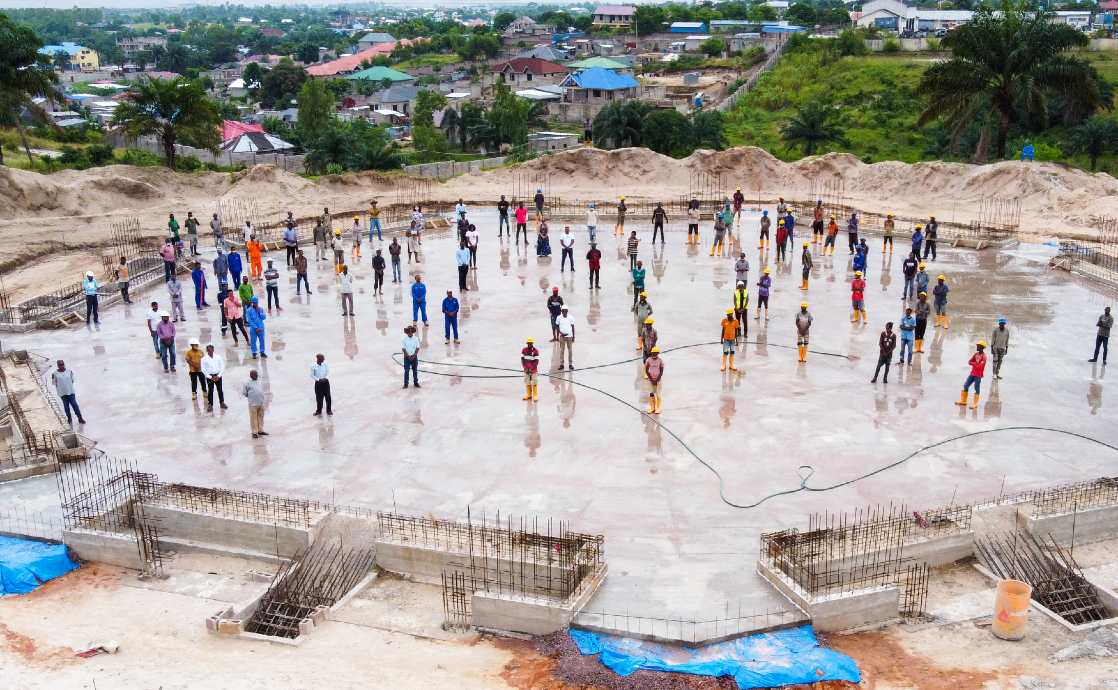The progress of the Bahá’í Faith around the globe is exemplified by the recent developments in the Democratic Republic of the Congo (DRC) and Kenya, where the foundations for magnificent Houses of Worship have been laid. As these temples near completion, it raises a playful inquiry: how will these sacred spaces transform the spiritual landscape of their respective communities? This article explores the profound implications of the Houses of Worship, their architectural significance, and the challenges they might pose to both local and global Bahá’í communities.
Houses of Worship, or Temples, in the Bahá’í Faith serve as crucial hubs for spiritual unity and community engagement. Unlike conventional places of worship associated with a singular religious doctrine, Bahá’í Temples are open to people of all faiths and backgrounds. This inclusive ethos fosters an environment where individuals can congregate harmoniously, promoting a sense of interconnectedness despite diverse beliefs. The construction of these two Temples signifies not only a physical manifestation of Bahá’í principles but also a renewed commitment to communal service, cultural exchange, and interfaith dialogue.
The DRC and Kenya Temples exemplify the Bahá’í commitment to architectural beauty and sustainability. These structures are designed to harmonize with their surroundings while utilizing environmentally friendly materials. The architectural styles often reflect the cultural heritage of their locations, integrating local artistry with universal themes of unity and equality. Consequently, the aesthetic choices embody a deep respect for local traditions while promoting a global vision of unity.
However, the construction of these Temples does not come without challenges. For instance, local communities may experience a spectrum of emotions ranging from excitement to skepticism. The playful question remains: can these Houses of Worship genuinely fulfill the diverse needs of the communities they serve? This inquiry prompts deeper reflections on the nature of communal expectations, trust, and engagement in the context of modern faith practices.
As construction progresses, the Bahá’í community in both the DRC and Kenya faces the challenge of ensuring that the Temple serves more than just a physical function. Community members are called to actively participate in the development process, aligning their aspirations with the Temple’s mission. There is a pressing need for inclusive dialogues that allow voices from diverse demographics—youth, women, and marginalized groups—to contribute to the Temple’s purpose and function. This authentic involvement will not only enhance the relevance of the Temple but also solidify community bonds.
The DRC Temple, poised to be a beacon of light in a region historically plagued by conflict, carries the potential for much-needed healing and reconciliation. By providing a space for reflection, prayer, and collective action, the Temple can serve as a catalyst for community-building efforts that transcend ethnic and social divides. Enhancing collaboration among various groups could pave the way for a deeper understanding of one another’s experiences, encouraging empathy and cooperation.
In a similar vein, the Kenyan Temple is being designed to address the multifaceted challenges faced by both urban and rural populations. In a rapidly urbanizing environment marked by socioeconomic disparities, the Temple intends to serve as a space for educational initiatives, social services, and cultural gatherings. This proactive approach is vital, as becoming a cornerstone for community efforts requires ongoing dialogue with local stakeholders and adaptability to their evolving aspirations.
Visionaries within the Bahá’í community globally view these Temples not merely as edifices but as transformative agents of social change. They underscore the need to harness the Temple’s potential to address pressing societal issues—such as poverty alleviation, educational advancement, and women’s empowerment. By embedding these objectives in the Temple’s operations, the Bahá’í community can demonstrate the practical application of its spiritual teachings.
Nonetheless, the potential challenge lies in balancing the sacred nature of the House of Worship with its role as a social service center. Will visitors perceive the Temple solely as a place of worship, or will they also embrace it as a vibrant hub of community engagement? The answer rests in the continuous promotion of the Bahá’í principles that underpin the Temple’s existence—unity, altruism, and service to humanity.
Moreover, the proliferation of digital connectivity raises important questions regarding how these Temples can engage with a global audience. In an age where spiritual seekers often turn to online platforms for guidance and community, the challenge is to create a seamless interaction between local devotion and global engagement. How can the Bahá’í community utilize technological advancements to enhance the spiritual experience offered by these Houses of Worship without diminishing their sanctity?
As the DRC and Kenya Temples near completion, the Bahá’í community stands on the precipice of a remarkable opportunity. With patience, dedication, and open hearts, these Houses of Worship can transcend their physical structures to embody the very essence of Bahá’í teachings—unity and collective progress. Creating such environments requires thoughtful discourse, strategic collaboration, and a steadfast commitment to the principles of the Faith.
Ultimately, the foundational work being laid in both the DRC and Kenya marks a significant milestone in the Bahá’í journey, suggesting a hopeful future brimming with possibilities. As these Temples rise to prominence, may they inspire local communities and beyond, igniting a fervent passion for collective action and spiritual enlightenment. The world may be waiting to witness the transformative impact of these Houses of Worship, and it will be crucial for the Bahá’í community to rise to that challenge with grace, wisdom, and a collaborative spirit.
